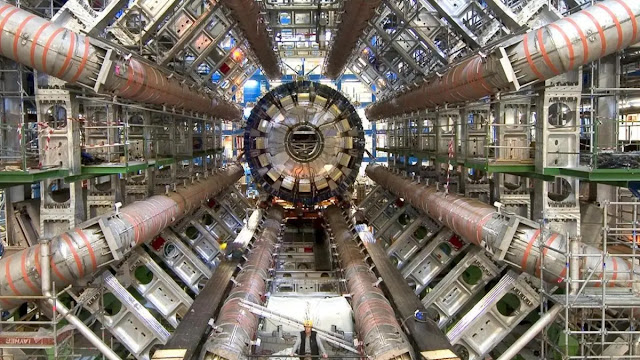Team to construct vital detector parts and analysis tools for High-Luminosity-LHC upgrade.
High energy particles collide at CERN’s Large Hadron
Collider (LHC) to create rarer, more massive particles like the Higgs boson,
which was found there in 2012. Nevertheless, a great deal remains to be
discovered about this particle, whose characteristics set it apart from all
other fundamental particles.
To fulfill more advanced tests, the world’s largest and most
potent accelerator is set to get a significant upgrade. The US Department of
Energy’s SLAC National Accelerator Laboratory is poised to play a crucial role.
According to SLCA, its experimentalists and theorists will
work together to build essential detector parts and data analysis tools for a
High-Luminosity-LHC (HL-LHC) upgrade. The advancements are slated to help
researchers probe the Higgs boson and explore physics beyond the Standard
Model.
The LHC works by lining miles-long and pipe-like “tracks”
with superconducting magnets, which can bend, direct, and accelerate a beam of
high-energy particles to nearly the speed of light.
Crucial role in HL-LHC detector upgrade
The LHC is being upgraded to the HL-LHC to measure
self-coupling for the first time and investigate the properties of the Higgs
boson. The luminosity of the LHC, which represents the quantity of collisions
over a period of time, will rise as a result of the HL-LHC. More collisions
increase the likelihood that uncommon particles will emerge and be detected by
the accelerator’s detectors in addition to the number of Higgs bosons.
SLAC must finalize the internal assembly of a crucial
detector component before the HL-LHC commences data collection in 2029.
The rapid succession of billions of collisions anticipated
at the HL-LHC presents a challenge for the ATLAS detector in effectively
detecting and distinguishing particles generated in these collisions. The
detector faces difficulty identifying significant events amidst the dense
accumulation of collisions.
According to researchers, upgrading the two deepest layers
of ATLAS, which are closest to the collisions, is the responsibility of SLAC,
which will be done in collaboration with thirteen other national laboratories
and institutions.
The Inner Tracker (ITk), whose tiny silicon sensors, or
pixels, will trace the pathways of post-collision particles, will replace the
heart of ATLAS.
“ITk is absolutely crucial to the upgrade and fits exactly
within that priority of P5. Whereas most systems being delivered to CERN will
be assembled there, SLAC is delivering the whole, fully assembled pixel inner
system detector,” said Philippe Grenier, level 2 manager of the ITk upgrade and
lead scientist at SLAC, in a statement.
Furthermore, the High Granularity Timing Detector (HGTD), a
new subdetector that will provide exact timing data to ITk in order to help
prevent pileup situations, is also been proposed by the ATLAS group at SLAC.
Enhancing data analysis and trigger systems
The team at SLAC will later assist in analyzing ATLAS data
once the HL-LHC is operational. Researchers are now tasked with expanding and
improving the use of AI to evaluate data from the HL-LHC more effectively.
Algorithms for machine learning are frequently employed to extract patterns
from detector data.
To reconstruct events more accurately, the researchers must
develop advanced machine learning algorithms that can reduce pileup
interactions even after upgrading ATLAS.
“The work on improved HL-LHC reconstruction algorithms will
be key in enabling the full physics potential of the HL-LHC, and is synergistic
with the detector work,” said Schwartzman.
Additionally, the ATLAS group is working to integrate AI
into additional data collection phases, such as the trigger system. There will
be five to seven billion collisions produced by the HL-LHC each second.
According to researchers, ATLAS’s trigger system rapidly but
roughly reconstructs the particles created during these occurrences to select
which events to retain and discard.
The ATLAS group is collaborating with the Technology
Innovation Directorate at SLAC to figure out how to integrate ultrafast AI into
the trigger hardware.
“One of the things we’re excited about is putting AI right
on these electronics to run at the microsecond or even nanosecond level to help
with those pattern recognition algorithms, said Michael Kagan, a lead staff
scientist at SLAC working on these pattern recognition algorithms.
The team is also pioneering rapid machine learning tools for
ATLAS’s trigger, diverging from traditional event selection. The new algorithm
flags anomalies within data, potentially unveiling physics beyond the Standard
Model, even events dismissed by the trigger system.
According to researchers, the approach holds promise beyond
HL-LHC, potentially aiding applications like self-driving cars and managing
data influx at facilities like SLAC’s LCLS-II. Fast ML’s adaptability hints at
broader scientific and technological implications beyond high-energy physics
research.
